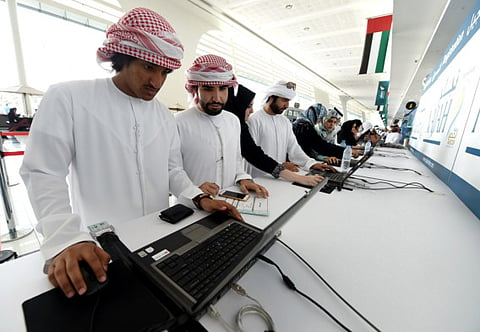The youth factor
By promoting leisure opportunities, the UAE has improved and continues to improve the quality of life

The Arab Human Development Report (AHDR) published its 2016 edition a few days ago. Measured in terms of the Human Development Index (HDI), the report states that all Arab countries increased their level of achievement between 1980 and 2010, in part, thanks to improvements in education and health. However, the report also points out to lingering and persistent concerns such as growing inequality, increasing conflict, exclusion, high unemployment, weak political engagement and pervasive discrimination against women.
The youth factor or bulge, i.e. Arab populations that are increasingly young, takes up a significant portion of the AHDR. Although Arab youth are not necessarily a coherent group, but highly diverse in ways of religion and socioeconomics, they logically play a significant role in the development of Arab countries. The share of the youth exceeds 30 per cent of the working age population in the region, which amounts to a total of more than 108 million young people.
The youth, as told by the authors of the AHDR, are those who are in a transitional phase of their life, a phase that signals their move or shift from dependence to independence, generally situated within the age range from 15 to 24 years. Young people, as is the case in most countries, are then in their formative years in which they are exposed to tensions and anxieties that come about with their family life, in school or university and from peer pressure.
During the events of the Arab uprisings in Tunisia, Libya and Egypt, for example, many young people took to the streets and were instrumental in the mobilisation of the masses against their respective governments. The typical profile that was painted of them was unique from their fellow citizens. Many were highly educated and yet unemployed or underemployed. They were also highly tech-savvy and connected via social media, expressed different desires and values and were more risk-averse as compared to their parents’ generation.
Yet, for many of the young people, the aftermath turned out to be a disappointment. Their calls for reform and change went largely unmet. Conventional politicians took over from previous leaders and the governance of the country went back to ‘politics as usual’. Many young people resorted to apathy or hatched out plans to migrate and start a new life elsewhere. Some succumbed to the temptations and propaganda of violent extremist organisations, embracing a radical ideology that led to personal destruction.
Not all is negative, however, as the youth remain a potential force for good. According to the authors of the AHDR, Arab countries can achieve a significant leap forward in development, reinforce stability and secure such gains in a sustainable manner, if they wholeheartedly prioritise adopting policies that ensure the well-being, productivity, self-determination and good citizenship of their young population.
The UAE has long ago recognised the potential of the youth and has addressed it by taking a number of steps. For one, the country has invested heavily in higher education, providing free education for nationals and training them for the job market. The government has been at the frontline of women empowerment in the Middle East, encouraging and placing Emirati women in responsible positions in the public and private sectors. Gender equality has become a hallmark of the government’s public policy.
It has also established the UAE Minister of State for Youth Affairs, catering to the concerns and aspirations of the youth by creating Youth Circles or Youth Consultative Councils in many of the Emirates, thus providing an opportunity for the youth as aspiring key members of society to actively participate in decision-making and leadership training at the ground level. Lastly, the UAE has invested heavily in leisure activities, such as sports and recreational facilities (entertainment parks, cinemas, theatres etc), thereby affording its youth far greater choices on how to spend their time-off. By promoting leisure opportunities, the UAE has improved and continues to improve the quality of life.
The UAE government clearly expects its own youth to take on responsibility and to contribute to the future of the country. After having reflected on the immense barriers and challenges and the dire circumstances facing the youth elsewhere in the Arab world, many young Emiratis have realised that in comparison to others in the Arab world, they are in a privileged position. The UAE’s reputation has paid dividends in terms of many young Arabs looking to this country for guidance. According to the 2016 Asda’a Arab Youth Survey, the UAE has been considered by most respondents to be a “model country that is economically secure and is the most favoured nation to live in and set up a business”. This is an achievement that the government and the people of UAE must be proud of.
Kristian P. Alexander is assistant professor in the College of Social Sciences and Humanities, Zayed University, Abu Dhabi.
Sign up for the Daily Briefing
Get the latest news and updates straight to your inbox



